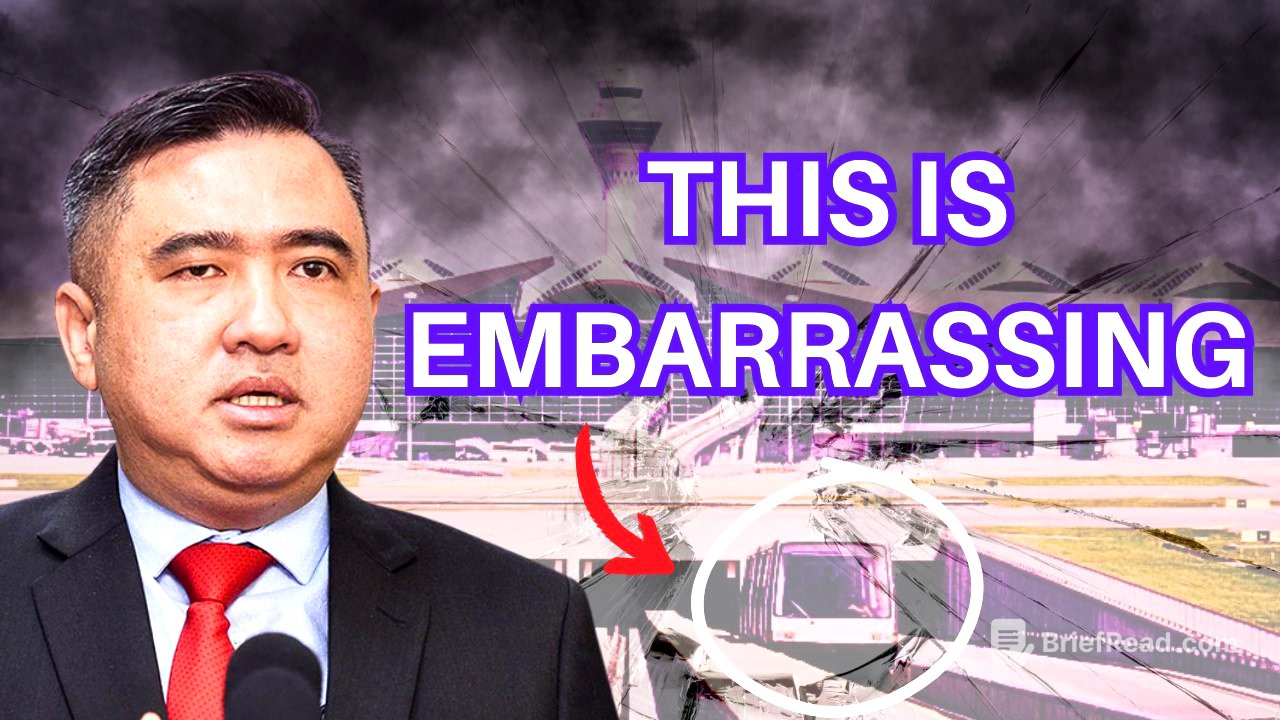TLDR;
This video compares Singapore's Changi Airport (Changi) and Malaysia's Kuala Lumpur International Airport (KLIA), examining their contrasting trajectories from similar starting points to their current vastly different reputations. Changi is consistently ranked as the world's best airport, while KLIA struggles with infrastructure and declining rankings. The video explores the historical context, strategic decisions, and management approaches that led to these outcomes, highlighting the importance of continuous innovation, long-term vision, and effective execution in maintaining a world-class airport.
- Changi Airport's success is attributed to its focus on infrastructure, efficiency, global connectivity, and continuous evolution.
- KLIA's decline is linked to poor execution, lack of sustained investment, and systemic issues in management and decision-making.
- The video emphasizes the impact of an airport's performance on a country's global reputation and economic competitiveness.
Introduction: Contrasting Fortunes of Changi and KLIA [0:00]
The video introduces the contrasting stories of Singapore's Changi Airport and Malaysia's Kuala Lumpur International Airport (KLIA). Changi Airport is celebrated as the world's best, while KLIA faces challenges like broken infrastructure and declining rankings. The video poses the question of how Singapore transformed Changi into an aviation powerhouse while KLIA declined, emphasizing the importance of these airports for the global reputations of their respective countries.
Historical Context: Singapore vs. Malaysia in 1965 [1:38]
In 1965, Singapore, a small island nation, separated from Malaysia with an uncertain future due to a lack of natural resources and land. Malaysia, on the other hand, possessed vast land and rich natural resources, establishing a solid economic foundation. Over the following decades, Singapore focused on infrastructure, efficiency, and global connectivity, leading to its transformation into one of the world's wealthiest nations, with Changi Airport at the heart of this transformation.
The Rise of Changi and the Struggles of KLIA [2:37]
Changi Airport opened in 1981, aiming to create an experience and a world-class gateway to global connectivity. In 1998, KLIA was unveiled with the ambition of becoming Southeast Asia's premier aviation hub. However, unlike Changi, which evolved with long-term vision and meticulous planning, KLIA suffered from poor execution and a lack of sustained investment. By the 1990s, Changi had cemented its place as a global leader, while KLIA experienced a steady decline in rankings.
KLIA's Aerotrain Debacle: A Symbol of Stalled Progress [4:02]
The KLIA Aerotrain, intended to connect the main and satellite terminals, has been out of service since March 2023 due to repeated breakdowns, forcing passengers to use shuttle buses. The replacement project has missed multiple deadlines, with costs increasing to 456 million ringgit. Transport Minister Anthony Lok has expressed frustration over the delays, highlighting the fact that a broken Aerotrain symbolizes stalled progress for an airport meant to be Malaysia's gateway to the world.
KLIA's Ongoing Challenges and Makeover Plans [6:31]
Travelers have reported frustrations with KLIA, including long immigration lines, slow baggage handling, and outdated facilities. In 2024, KLIA dropped to 71st place in the Skyrax Global Airport rankings. Malaysia is investing 10 billion ringgit in a makeover to modernize terminals, improve transit, and expand airline connections, aiming to bring KLIA back to the world's top 10 airports by 2028. However, expansion plans will only be considered once Terminal 2 reaches full capacity, hinting at further delays.
Changi's Continuous Innovation and Expansion [8:45]
While KLIA struggles to regain its footing, Singapore is preparing for the future by setting new global standards. Changi Airport opened Terminal 4 in 2017, integrating biometric facial recognition and automated immigration clearance. In 2019, Jewel Changi Airport, a $1.7 billion lifestyle and entertainment hub, was unveiled to transform Changi into a destination of its own. Between 2015 and 2023, Terminals 1 and 2 underwent major expansions, and Terminal 5 is set to open in the mid-2030s, increasing capacity to 140 million passengers annually.
Changi's Design and Passenger Experience [13:16]
Jewel Changi Airport creates an emotional connection with visitors through its rain vortex, the world's tallest indoor waterfall, and the Chaseedo Forest Valley, a lush indoor rainforest. Changi treats passengers as guests, offering superior service, cutting-edge efficiency, and a seamless travel experience. The airport continuously expands and modernizes to meet the demands of tomorrow's travelers, reinvesting income into future growth.
KLIA's Cultural Charm vs. Changi's Forward-Thinking Strategy [15:19]
KLIA has cultural charm with traditional Islamic-inspired skylights and a rainforest ambiance. In 2024, KLIA ranked fourth on Instagram's most hashtagged airports list, surpassing Changi. However, KLIA lacks a clear forward-thinking strategy to stay competitive, operating with a layout and infrastructure largely unchanged since its opening in 1998. Planned upgrades are steps forward, but they pale in comparison to Singapore's advancements.
Management and Privatization [16:40]
Changi Airport is operated by Changi Airport Group, focused solely on aviation development, ensuring strategic planning and proactive investment. KLIA is managed by Malaysia Airports Holdings Berhad (MAHB), overseeing 39 airports across the country, which presents operational challenges. In February 2025, Malaysia moved to privatize MAHB with a consortium led by Kazana, EPF, and global infrastructure partners. Skepticism remains about whether this move will reverse KLIA's decline, as GIP's track record does not place its managed airports among the world's best.
Conclusion: The Verdict and Future Outlook [19:16]
Changi Airport offers a complete package with cutting-edge design, top-tier amenities, and a commitment to relentless innovation, while KLIA is still playing catch-up. Malaysia Airlines has been on a steady decline, while Singapore Airlines continues to excel. The video concludes that Changi Airport is superior to KLIA, emphasizing the importance of continuous improvement and strategic management in maintaining a world-class airport.









